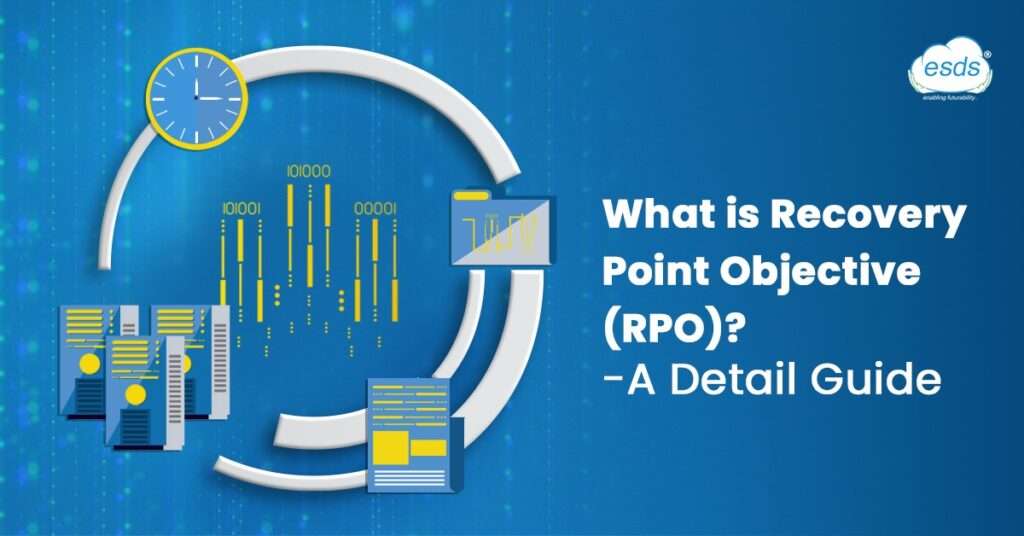Recovery Point Objective (RPO)- One Stop Guide
Data backup is as imperative as data protection for enterprises of any size. Reason: Outage, data breach, and any other disaster can happen anytime, anywhere, without warning. And data loss is a business loss if there are no measures in place to recover the lost data. So, how do you ensure to recover the data in case of an event? Through data backup. While earlier organizations had a traditional way of backing up their data, with digitalization, a huge amount of data can’t be backed up in a traditional way. So, cloud backup solutions and services were introduced. And while discussing cloud backup solutions or cloud backup services, we are sure you have come across the term RPO or Recovery Point Objective. And most of you must have wondered what exactly the recovery point objective (RPO) is. In this article, we will discuss RPO in detail, creating a one-stop guide for all your business. What is Recovery Point Objective (RPO)? Before we delve into the importance and benefits of RPO, let’s understand what RPO is. According to the definition, Recovery Point Objective or RPO is the metric defining the maximum acceptable amount of data loss an organization can tolerate in the case of a mishap. RPO represents the time when a business’ data must be recovered to minimize the disaster’s impact on its operations. With the RPO, organizations are in a better position to plan and implement disaster recovery and business continuity strategies. To ensure a successful RPO strategy, businesses, irrespective of their size, must calculate the loss tolerance occurring between data backups. Simultaneously, the time frame required for transitioning from disaster to operational status is also crucial according to scheduled data backups. Since the RPO is the last point when a business’ data is maintained in a manner that can be used, it also helps in planning disaster recovery along with permissible backup intervals. For instance, when you have an RPO of an hour, it is imperative for you to perform data backup every hour. How to Define Your RPOs? When we talk about defining your RPOs, we are talking about the frequency with which you want to update your data files. Here are some factors that may influence your RPOs. What Do RPOs Determine? Once the RPOs are defined, they can help organizations determine the following: What is Zero RPO? An unacceptable data loss is denoted by Zero RPO. Zero RPO is the data your industry can’t afford to lose, even for a split second, without having major consequences or repercussions. Continuous data protection and replication are the keys to ensuring Zero RPO. Examples of Zero RPO Two prime examples of Zero RPO are – Digital Medical data and financial transactions at a bank. Importance of Recovery Point Objective The recovery Point Objective, as learned, is the amount of data loss an organization can tolerate, which is important for various reasons. And it is deemed critical in industries where organizations can’t afford data loss even for a second. Here are some of the reasons why recovery point objective is important for businesses irrespective of their size. With RPO, organizations can – 3. Assist in determining your Service Level Agreement (SLA) during disruption: One of the crucial roles the recovery point objective plays is a role of determining the Service Level Agreement or SLA between an organization and its service providers. The SLA helps in defining the expected levels of service during a disruption. Organizations can leverage RPO in SLA determination by considering the following: We have learned how crucial is the recovery point objective, but here are some of the major benefits of RPO for a business that deals with critical data most of the time. Factors Involved to Calculate RPO There are several factors on which the calculation of the recovery point objective is listed below. Top Recovery Point Objective Trends in 2024 Some of the top recovery point objective trends to watch out for in 2024 include: Recover and Resume with Ace Data AceData is one of the most trusted Disaster Recovery as a Service (DRaaS) providers. With a committed team of experts who have extensive hands-on experience, we help businesses recover data and get access to IT infrastructure after a disaster. We offer end-to-end disaster recovery solutions. So, whenever a disaster affects your internal systems, your DRaaS system can quickly come into action, providing you with zero downtime or the planned Recovery Point Objective (RPO). To know more about it, book a demo with Acedata.
Recovery Point Objective (RPO)- One Stop Guide Read More »


